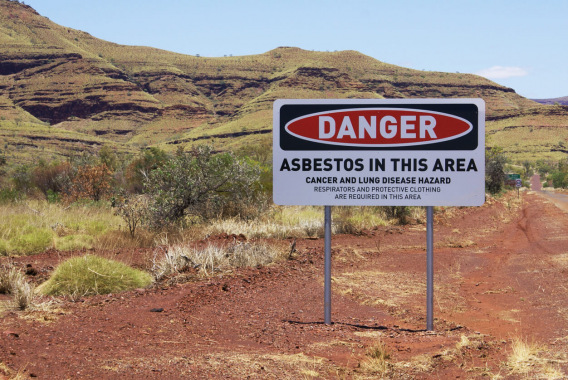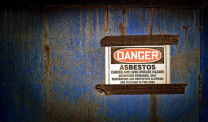Australian Asbestos Ghost Town Cemetery Raises Questions
Asbestos Exposure & BansWritten by Michelle Whitmer | Edited by Walter Pacheco

Western Australia’s most notorious ghost town known for widespread asbestos contamination and mesothelioma has been razed. But loved ones wonder how they can visit family and friends buried in the town’s cemetery.
Demolition of the abandoned town of Wittenoom had begun in May after a brush fire in late 2022 destroyed the town’s few remaining structures. Prior to its demolition, authorities had blocked off roads and other access routes to keep curious onlookers from visiting the toxic town.
Despite Wittenoom being wiped off the map, officials said the town’s cemetery wouldn’t be touched. But they haven’t explained to loved ones of those buried in the cemetery how and when they can visit their graves.
Belinda McNicol, whose sister is buried in the cemetery, told Australian news outlet ABC News the government’s silence is “disgusting.”
“The fact that they haven’t reached out to families is concerning,” McNicol said.
Loved Ones Left in the Dark
So far, Western Australian government officials have not said if visitors will be allowed to come to the cemetery. A spokesperson for the government’s Department of Planning, Lands and Heritage said people accessing or camping in areas near Wittenoom after being advised to move on could be subject to action by the department, according to ABC News.
People are upset about the lack of communication and are calling for clarity from the government. They say they expected more dialogue between officials and families with relatives buried at Wittenoom.
“If they’re going to go in and knock down these other buildings, to deter people from going there and visiting there, then they need to clearly label where the cemetery is,” McNicol said. She said her family buried her sister in the cemetery in 1973, shortly after she was born in Wittenoom.
Asbestos Contamination, Mesothelioma in Wittenoom
Mining in Wittenoom began in the 1930s after the discovery of blue asbestos in the town. A decade later, a second asbestos mine opened. More than 165,000 tons of asbestos were mined in Wittenoom between 1943 and 1966.
The Australian government began closing the entire town by the late 1970s because of potential health concerns. In 2007, after Wittenoom was officially removed from all maps and road signs, people were discouraged from visiting the area.
Wittenoom is often dubbed the largest asbestos contamination site in the southern hemisphere. Many of the buildings, driveways and other structures were made with leftover asbestos. A database maintained by UWA’s Occupational Respiratory Epidemiology Group reports that at least 1,200 former Wittenoom residents and workers have died from lung cancer and mesothelioma.
Mesothelioma in Australia
Although asbestos has been banned in Australia since 2003, the country has one of the highest rates of new mesothelioma cases in the world. A report published in 2023 by the Australian Institute of Health and Welfare shows 722 mesothelioma cases were diagnosed in 2021. The agency also showed 701 people died of mesothelioma in 2020.
Australia mined and imported asbestos for use in construction and transportation. Asbestos still remains in many older buildings, leading to possible exposure and increased numbers of mesothelioma cases.






